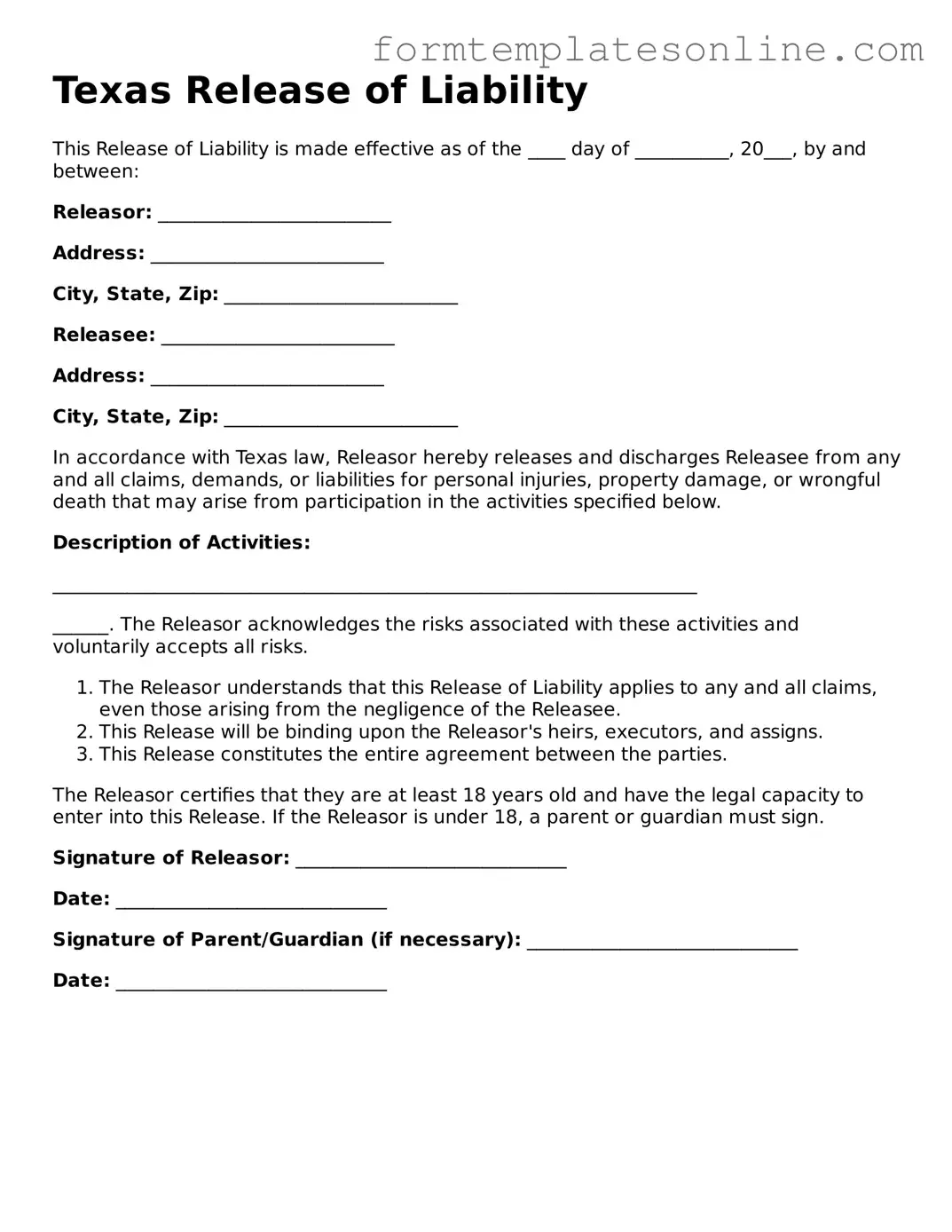Texas Release of Liability
This Release of Liability is made effective as of the ____ day of __________, 20___, by and between:
Releasor: _________________________
Address: _________________________
City, State, Zip: _________________________
Releasee: _________________________
Address: _________________________
City, State, Zip: _________________________
In accordance with Texas law, Releasor hereby releases and discharges Releasee from any and all claims, demands, or liabilities for personal injuries, property damage, or wrongful death that may arise from participation in the activities specified below.
Description of Activities:
_____________________________________________________________________
______. The Releasor acknowledges the risks associated with these activities and voluntarily accepts all risks.
- The Releasor understands that this Release of Liability applies to any and all claims, even those arising from the negligence of the Releasee.
- This Release will be binding upon the Releasor's heirs, executors, and assigns.
- This Release constitutes the entire agreement between the parties.
The Releasor certifies that they are at least 18 years old and have the legal capacity to enter into this Release. If the Releasor is under 18, a parent or guardian must sign.
Signature of Releasor: _____________________________
Date: _____________________________
Signature of Parent/Guardian (if necessary): _____________________________
Date: _____________________________
